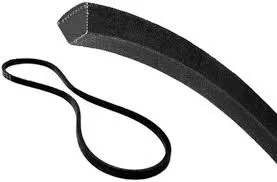- Arabic
- French
- Russian
- Spanish
- Portuguese
- Turkish
- Armenian
- English
- Albanian
- Amharic
- Azerbaijani
- Basque
- Belarusian
- Bengali
- Bosnian
- Bulgarian
- Catalan
- Cebuano
- Corsican
- Croatian
- Czech
- Danish
- Dutch
- Afrikaans
- Esperanto
- Estonian
- Finnish
- Frisian
- Galician
- Georgian
- German
- Greek
- Gujarati
- Haitian Creole
- hausa
- hawaiian
- Hebrew
- Hindi
- Miao
- Hungarian
- Icelandic
- igbo
- Indonesian
- irish
- Italian
- Japanese
- Javanese
- Kannada
- kazakh
- Khmer
- Rwandese
- Korean
- Kurdish
- Kyrgyz
- Lao
- Latin
- Latvian
- Lithuanian
- Luxembourgish
- Macedonian
- Malgashi
- Malay
- Malayalam
- Maltese
- Maori
- Marathi
- Mongolian
- Myanmar
- Nepali
- Norwegian
- Norwegian
- Occitan
- Pashto
- Persian
- Polish
- Punjabi
- Romanian
- Samoan
- Scottish Gaelic
- Serbian
- Sesotho
- Shona
- Sindhi
- Sinhala
- Slovak
- Slovenian
- Somali
- Sundanese
- Swahili
- Swedish
- Tagalog
- Tajik
- Tamil
- Tatar
- Telugu
- Thai
- Turkmen
- Ukrainian
- Urdu
- Uighur
- Uzbek
- Vietnamese
- Welsh
- Bantu
- Yiddish
- Yoruba
- Zulu
Дек . 14, 2024 15:01 Back to list
High-Performance Solutions for Motor Belts and Their Applications
Understanding Motor Belts An Essential Component in Mechanical Systems
Motor belts are a fundamental aspect of many mechanical systems, playing a crucial role in the transfer of power and motion within various types of machinery. Whether in industrial applications, automotive environments, or household appliances, the reliability and efficiency of motor belts are paramount. This article delves into the key aspects of motor belts, including their types, functions, advantages, and maintenance considerations.
Types of Motor Belts
Motor belts come in several varieties, each designed for specific applications and operational requirements. The most common types include
1. V-Belts These belts have a trapezoidal cross-section and are widely used in mechanical systems due to their ability to operate quietly and efficiently. They are typically used in applications requiring a high friction coefficient, making them ideal for driving pulleys with significant load variations.
2. Flat Belts Characterized by their rectangular cross-section, flat belts are used primarily in lighter-duty applications. They have a larger contact area with the pulleys, resulting in lower stress concentrations. However, they tend to slip more easily under heavy loads compared to V-belts.
3. Timing Belts These belts have teeth that engage with corresponding grooves on the pulleys, ensuring synchronous movement. Timing belts are integral in applications where precise timing is crucial, such as in automotive engines and sewing machines.
4. Poly-V Belts A variation of the V-belt, poly-V belts feature multiple small grooves. They are designed for compact applications, providing a high level of flexibility and allowing for more power transmission in less space.
Functions of Motor Belts
The primary function of motor belts is to transmit mechanical power from one component to another. In a typical setup, a motor generates rotational energy, which is transferred to a pulley system through the belt. This process enables various mechanical functions, such as driving wheels, fans, and conveyor systems. Furthermore, motor belts can offer several benefits, including
motor belts

- Vibration Damping Motor belts help absorb vibrations from the motor, reducing noise and enhancing overall comfort in applications such as vehicles and machinery. - Adjustability Many motor belts allow for adjustments in tension, making it easier to maintain optimal performance as wear occurs over time. - Efficiency When properly selected and maintained, motor belts provide highly efficient power transmission, contributing to the overall energy conservation of a system.
Advantages of Using Motor Belts
Motor belts offer numerous advantages over other mechanical power transmission methods, such as gears or chains. Some of these benefits include
- Simplicity and Cost-Effectiveness Installing and maintaining belts is generally simpler and less costly than complex gear systems or chain drives. - Less Weight Belts are typically lighter than their metal counterparts, which can lead to lower energy consumption and less structural stress on machinery. - Versatility Motor belts are adaptable to various applications and can be easily replaced, making them suitable for a wide range of industries.
Maintenance Considerations
To ensure the longevity and effectiveness of motor belts, regular maintenance is essential. This includes
- Inspection Regularly check for signs of wear, such as cracks, fraying, or glazing. Early detection of any issues can prevent costly breakdowns. - Alignment Ensure that pulleys are aligned correctly. Misalignment can lead to premature wear or damage to the belts. - Tension Adjustment Maintaining the correct tension is vital. Both excessive and insufficient tension can compromise performance and lead to belt failure. - Cleaning Dust and debris can accumulate on belts and pulleys, causing slippage or increased wear. Keeping these components clean helps maintain optimal functionality.
Conclusion
In summary, motor belts are an indispensable component in many mechanical systems, providing efficient power transmission and flexibility across various applications. Understanding the different types of belts and their functions, along with proper maintenance practices, will help ensure that these vital components continue to perform reliably. As technology evolves, advancements in materials and design will likely enhance the capabilities of motor belts, further solidifying their importance in modern machinery and applications.
-
Korean Auto Parts Timing Belt 24312-37500 For Hyundai/Kia
NewsMar.07,2025
-
7PK2300 90916-T2024 RIBBED BELT POLY V BELT PK BELT
NewsMar.07,2025
-
Chinese Auto Belt Factory 310-2M-22 For BMW/Mercedes-Benz
NewsMar.07,2025
-
Chinese Auto Belt Factory 310-2M-22 For BMW/Mercedes-Benz
NewsMar.07,2025
-
90916-02660 PK Belt 6PK1680 For Toyota
NewsMar.07,2025
-
drive belt serpentine belt
NewsMar.07,2025

